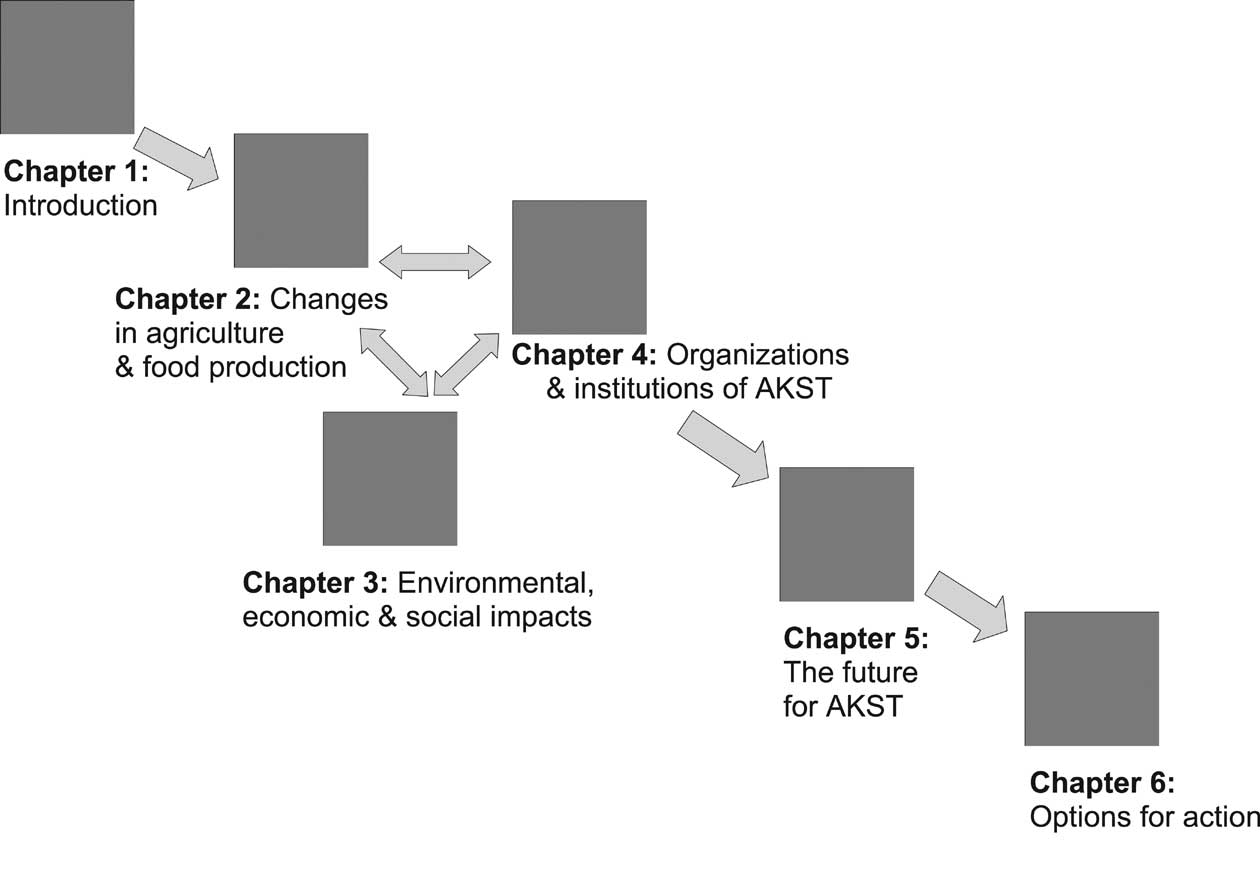
| Previous | Return to table of contents | Search Reports | Next |
| « Back to weltagrarbericht.de | ||
Setting the Stage | 3

Figure 1 -1. Roadmap for North America and Europe NAE assessment
|
require different forms of AKST than sufficed for previous agrifood systems. Choices about future investment in AKST and associated policies will affect who benefits from and who controls agrifood systems and their products, thus affecting who is able to meet development and sustainability goals. 1.1 Scope and structure 1.1.1 Geographic scope of NAE For the purposes of the IAASTD, the North America and Europe (NAE) region is considered to consist of three sub-regions. North America comprises the US and Canada; western Europe comprises the 27 countries of the European Union1 with Iceland, Norway, San Marino and Switzerland; while Eastern Europe is the remaining countries in the Balkans2, Russia, and its neighboring states Belarus, Georgia, Kazakhstan, Moldova, Uzbekistan and Ukraine. Israel is also included in the region. 1.1.2 Structure of the report This chapter introduces the NAE assessment and leads to an analysis (Chapter 2) of the changes in agrifood systems that have occurred over the past 50 years resulting from the generation, introduction and application of AKST (Figure 1-1). Chapter 3 examines environmental, economic and social impacts of these changes over the same time period; and Chapter 4 examines changes in the organization and institu- 1 Countries of EU27 are: Austria, Belgium, Bulgaria, Cyprus, Czech Republic, Denmark, Estonia, Finland, France, Germany, Greece, Hungary, Ireland, Italy, Latvia, Lithuania, Luxembourg, Malta, Netherlands, Poland, Portugal, Romania, Slovakia, Slovenia, Spain, Sweden, United Kingdom. 2 Other Balkan countries are Albania, Bosnia and Herzegovina, Croatia, Macedonia, Serbia and Montenegro |
tions of AKST and their consequences for development and sustainability goals. Chapter 5 introduces forecasting as a method for analyzing the consequences of different options in AKST, congruent with different alternative future developments in the region, and describes major trends affecting agriculture and AKST in NAE. Chapter 6 draws from the lessons summarized in Chapters 2, 3 and 4 about the past generation and application of AKST, and significant trends noted in Chapter 5, to explore options for future investment, policies, education, training and funding. 1.1.2.1 Interface with Global Assessment and other Sub-Global Assessments The Sub-Global Assessments (including NAE) were developed simultaneously with the Global Assessment by different working teams, which gave limited opportunities to coordinate the findings. However, representatives of the different assessments met together twice and shared their plans. Each Sub-Global Assessment has a slightly different structure to accommodate the particular issues that contributors thought needed the most attention. The Global Assessment is longer and more comprehensive than any of the Sub-Global Assessments, but does not go into detail on individual regions other than to illustrate points via case studies or vignettes. The separate Synthesis Report combines the major points of all of the reports (Global and Sub-Global) and highlights findings from the crosscutting thematic issues. 1.1.2.2 Thematic issues Each Sub-Global Assessment deals with the past 50 years of AKST in relation to the development and sustainability goals specified in the original mandate to conduct the IAASTD. However, certain themes emerged that deserved special attention because of their importance to meeting the development and sustainability goals, their contentiousness, or the lack of adequate attention to them in previous assessments. These themes are: |
| Previous | Return to table of contents | Search Reports | Next |
| « Back to weltagrarbericht.de | ||